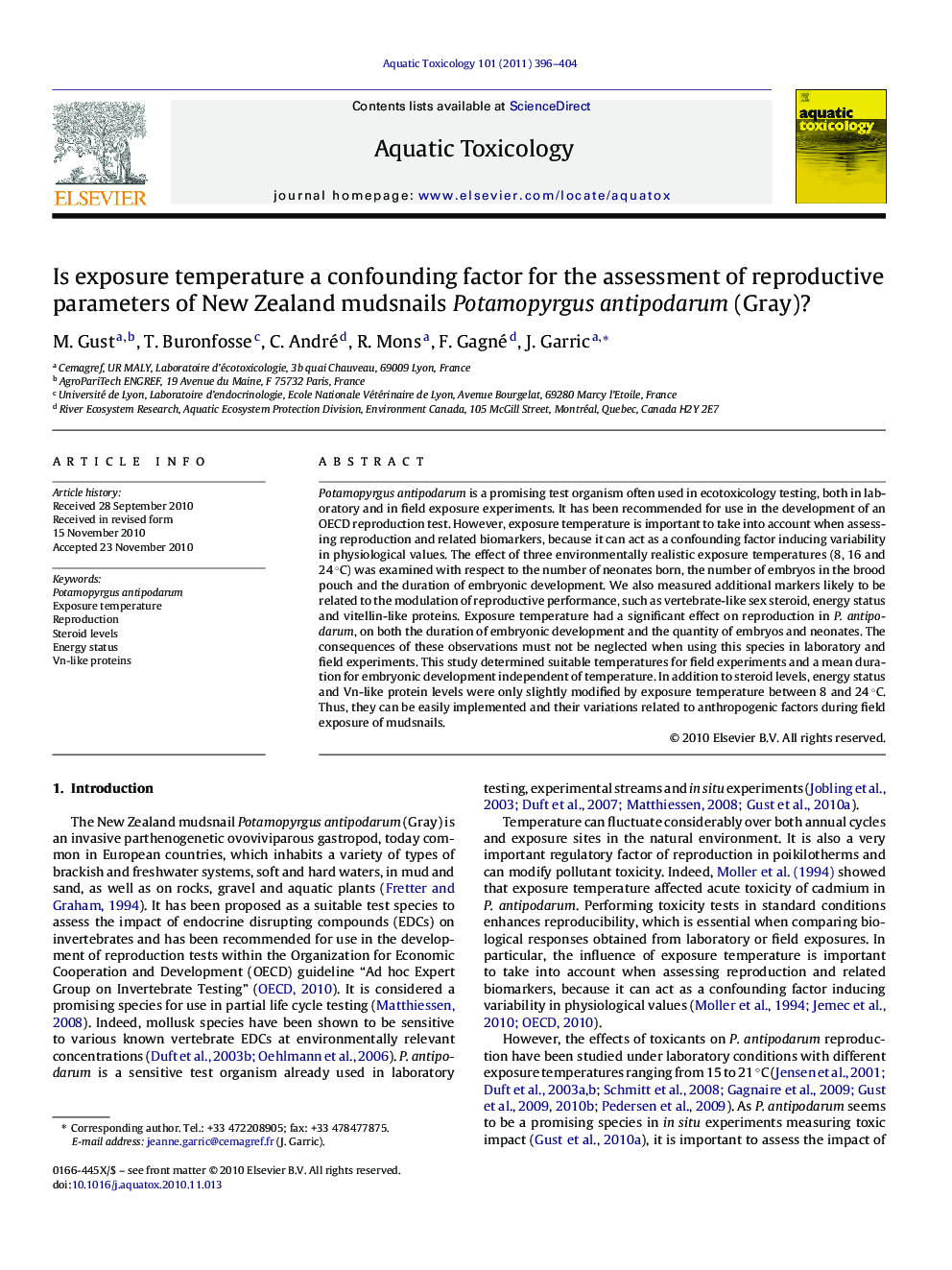| Article ID | Journal | Published Year | Pages | File Type |
|---|---|---|---|---|
| 4530053 | Aquatic Toxicology | 2011 | 9 Pages |
Abstract
Potamopyrgus antipodarum is a promising test organism often used in ecotoxicology testing, both in laboratory and in field exposure experiments. It has been recommended for use in the development of an OECD reproduction test. However, exposure temperature is important to take into account when assessing reproduction and related biomarkers, because it can act as a confounding factor inducing variability in physiological values. The effect of three environmentally realistic exposure temperatures (8, 16 and 24 °C) was examined with respect to the number of neonates born, the number of embryos in the brood pouch and the duration of embryonic development. We also measured additional markers likely to be related to the modulation of reproductive performance, such as vertebrate-like sex steroid, energy status and vitellin-like proteins. Exposure temperature had a significant effect on reproduction in P. antipodarum, on both the duration of embryonic development and the quantity of embryos and neonates. The consequences of these observations must not be neglected when using this species in laboratory and field experiments. This study determined suitable temperatures for field experiments and a mean duration for embryonic development independent of temperature. In addition to steroid levels, energy status and Vn-like protein levels were only slightly modified by exposure temperature between 8 and 24 °C. Thus, they can be easily implemented and their variations related to anthropogenic factors during field exposure of mudsnails.
Related Topics
Life Sciences
Agricultural and Biological Sciences
Aquatic Science
Authors
M. Gust, T. Buronfosse, C. André, R. Mons, F. Gagné, J. Garric,
